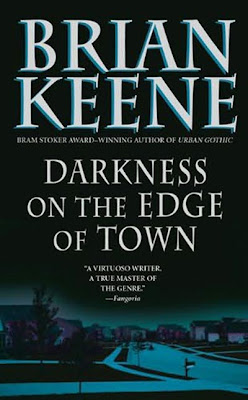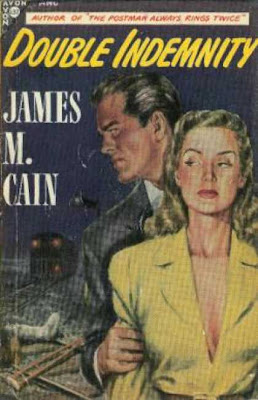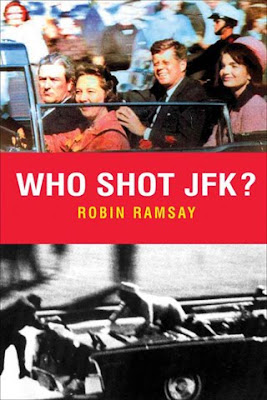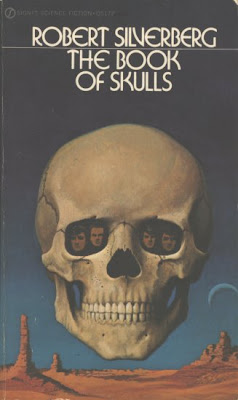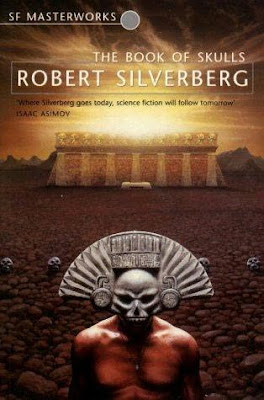Keeping this blog updated is a little bit of a challenge. It used to be a straightforward business – I'd languish at my NHS desk, fitfully perform my job, & then sneak back to tinker on my next entry. 5 minutes here, 5 minutes there. The gaps in blog work were useful, I'd have an insight into how to express something, or an idea for some kind of HILARIOUS WITTICISM with which to astound you all.
For the past month and a half I've been working from home, trying to get a lot of things accomplished – too many things - & the way it happens is when you try to accomplish too many things, you don't accomplish too many things.
All of which is a long-winded way of saying: here's an entry for something I read 6-7 weeks ago.
Kelly Link is the sort of writer that other writers love. This is not a theory. This is a fact borne out by the spasms of praise on the cover of this, her latest book.
Alice Sebold says: “Intoxicating. These stories will come alive, put on zoot suits and wrestle you to the ground. They want you and you will be theirs.”
Michael Chabon says: “A new short story collection by Kelly Link... and once more, for a little while, the world is worth saving.”
Neil Gaiman says: “Funny, moving, tender, brave and dangerous. She is unique, and should be declared a national treasure, and possibly surrounded at all times by a cordon or armed marines.”
Oh Neil Gaiman you are so funny & charming. You really are a good writer aren't you.

But also sort of like a rock star, with your cool hair & leather jacket.
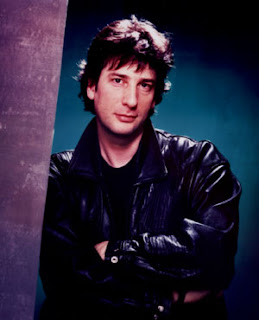
Not like a bad rock star – not the sort of rock star that does drugs & gets drunk & treats girls mean. You're a rock star the way they should be. The sort you can bring home to your parents, like that nice Chris Martin.


I love you Neil Gaiman.
I digress. What was I talking about? Oh yeah – Kelly Link. Writers love Kelly Link.
& this is not a comprehensive list of the praise on the cover. It is more like a core sample. There are journalists quoted, who clearly love Kelly just as much, but have difficulty expressing their love in witty & original ways, either because they lack the ability of special & talented writers like Neil Gaiman, or else maybe because their editors won't allow it. One thing is clear, however: a considerable portion of the publishing industry is sprawled out on cushions & writhing in a mandala pattern, a churning psychedelic orgy, around the (perhaps slightly embarrassed) form of Ms Link.

I first read Kelly Link about, er... I guess it was 6 years ago. They had a copy of her debut collection Stranger Things Happen at the Wellington Public Library. I pulled the book off the shelf because of its title, stared at it for a moment because it had an interesting cover, & ended up checking it out because it had a glowing review from Peter Straub on the back.
Back then it was just Peter Straub writhing on the cushions. Just him on his own.
I was impressed with Stranger Things Happen. I thought to myself: this is the sort of collection I'd like to put out some day. The stories were weird, not just because of their plots (which were weird), but because some were fragmentary, others were linked, there was a tendency to directly address the reader, to assume they knew things which they didn't, etc. The book felt like a whole, it was satisfying in a way that short fiction collections normally aren't. Like she'd written the stories separately, but always with the idea in mind of the book that would hold them all together.
I dunno. Maybe I'm going overboard here, I'm not sure. I have trouble remembering the specifics of that book. It very quickly dropped out of my mind & for a while I'd forgotten I'd even read it – not because it was bad, or bland, but because much of it had the unfocused & meandering nature of a dream. All I remembered for sure was that there were a few stories about a character called “the Girl Detective”, which I liked, & a story called “the Specialist's Hat” which I found baffling & scary.
Maybe Stanger Things Happen is a more normal book than I remember. At any rate Pretty Monsters is a more normal book than I remember Stranger Things Happening being.

The plots are still weird. Well... yes, they're definitely weird, but by the time you come to the end of this book a definite formula has emerged. In keeping with my “no spoilers” policy, I will keep my description of this formula as abstract as possible.
There is an alienated child or adolescent, aged 8-16. They are an only child, or a twin. They are missing one of their parents (often the father - where they have a father, he is aloof & emotionally incompetent).
The status quo is kooky & eccentric. Boy-girl relationships are especially kooky, & complicated. The reader is quietly surprised by many things. Then weird things begin to happen, even by the child's standards. These weird things often happen just below the surface of reality. There is an implicit sense of doom. A variety of strange characters interact with the child, some friendly, some bizarrely hostile (but, we eventually learn, friendly in their way).
The sense of implicit doom is ramped up – doom, doom. Then many surprising things happen at once. 1-2 characters reveal true identities that have a surprising relationship to the child. The anticipated doom either doesn't occur, or is revealed to be basically OK. The ending is ambiguous & confusing. We are confronted by an unanswered question, which initially didn't seem important.
This template can be applied, with almost universal success, to maybe 8 of the 10 stories in this book. Which in a sense is a shame. It's a shame because I don't think Stranger Things Happen was this formulaic. Like I say, I'm not too sure, it's been a while since I read it.
It's also a shame, generally, when things are formulaic. Isn't it? I don't know. & particularly when it happens in weird fiction – which I like to think of as enjoying a lot of freedom, but which is in practise often very formulaic. I suppose one could argue the irrationality of the events in the story need to be counterbalanced by a rationalising plot structure, or all hell would break loose (or the story would just be random & unconvincing).
The plus side of Link's formula is that it gives her a lot of room for being inventive, & if you like what you've read after the first 2-3 stories you start looking forward to it, because you know you have another 300 pages of the same. & it's an emotionally satisfying formula, for all those reasons people like to read funny, cynical, dark fantasy stories about alienated kids.
The alienated kid is you, because you were alienated when you were a kid.
The kookiness reminds you that when you were young life was full of wonder & possibilities.
But the missing parent reminds you it wasn't all fun & games.
The weird encounters with strange & sometimes hostile people reflect your experiences of growing up.
You remember the sense of doom – the sense that the bubble you lived in was going to burst. I guess turning into an adult felt like a death sentence. Or else maybe you felt that the more control or responsibility you were being given, the more things seemed to be going wrong
Eventually you got through it, & it wasn't so bad after all.
The things you were worried about turned out to be not so important.
But other things you'd ignored were suddenly coming to the fore.
It's a cosy formula. You get to the end, you have a mini nostalgia-catharsis, then you turn the page and start over again. Like going down a slide, climbing back up, going down it again.
Link has a very immersive, but aloof/alienated writing style. Something surprising happens every page. The prose is wilfully surprising – it is doing it's best to be unusual (unusually perceptive about the unusual traits of its unusual characters) on a moment to moment basis. You can get tired of it, or you can get sort of hooked & fall straight into it. Most of the stories in this book are around 60 pages long, which is just the right length to sit in a laundrette, or drink 2 pints in a bar after work, & read one of them.
& it genuinely is a shame when the book is over & you don't have any more of them to read.
I don't know if I'd call this book horror. Basically Link is weird, but cosy-weird. Like Neil. Or actually, the much better comparison is with Shaun Tan, who actually provides illustrations for this collection. You feel like Kelly Link & Shaun Tan would probably get along very well, if they were having coffee together. Maybe they have done just that. MAYBE THEY ARE HAVING AN AFFAIR.
Oh my God. What is it with these people!?

Now having said all that, I would like finally to discuss a couple of the stories in here.
This is not a 100% new/original collection. Some stories are reprinted from earlier books – in fact the theme here seems to be “let's collect her career in a large mass market compendium & properly introduce her to the public”. “The Specialist's Hat” has made the jump over from Stranger Things Happen.
“The Specialist's Hat” is, quite apart from everything I've said here, although the formula does sort of apply, a really magnificent piece of weird/horror fiction. It's so full of creepy details & creepy moments, & it scatters them around in a “connect the dots” way. The hat itself, & the scene with the bicycle, is one of the most weirdly frightening things I've read (or re-read) in a long time. There's no telling exactly what's going on here, but as a refreshing breath of fresh air things are NOT all OK at the end of the story. The sense of doom is still pounding away, even if it gets mitigated by a very chilling sort of optimism by the end. I really like this story.
Of the others, “Monster” fits the formula exactly, but is cool & creepy & hilarious. Also the final & most recent story, “The Cinderella Game” is very, very cool – it plays around in similar territory to the other stories, but it feels whole, it has its own atmosphere separate from the nostalgia-catharsis. It's sort of nastier. Maybe that's what the other stories needed, a dose of something less...
...smooshy.
GOOD? Yeah. These stories are so inventive & well written & charming it would be churlish to come down hard against them. I was a little disappointed at first at how conventional the collection turned out to be, but I had a great time reading this.
FILE UNDER: The weird horror-ish collection that you can safely lend to your niece, or to your mother.
WOULD GO WELL WITH: Tales from Outer Suburbia, by Shaun Tan. They'd go very well together. But hey I was just joking about these guys having an affair, I have absolutely no evidence to support this. I mean they probably met when collaborating on Pretty Monsters, maybe he flew over to where she lives, or she flew over to him, & maybe there was a night in there where, after checking over the proofs or whatever they were at a loose end for what to do, & they maybe had a couple of drinks together in the hotel bar. But that's normal. People do that sort of thing all the time, it doesn't mean anything.


